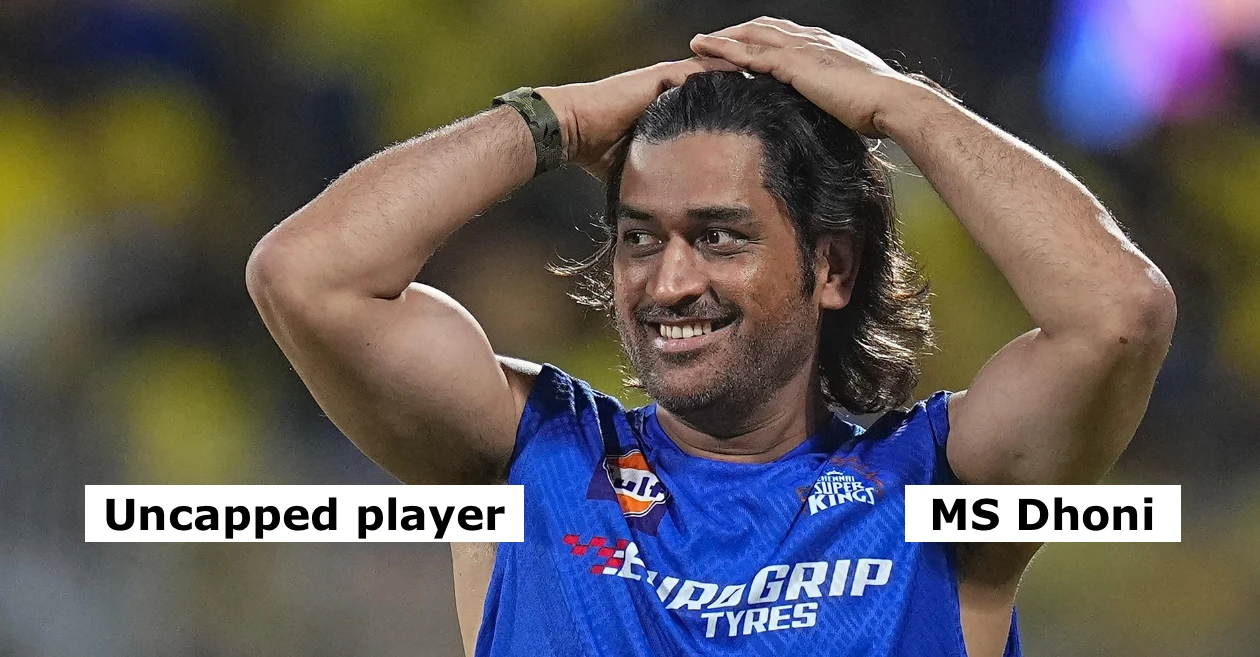As the Indian Premier League (IPL) gears up for its highly anticipated 2025 player mega auction, the tournament governing council has unveiled major changes to the retention policy that could reshape the strategies of all participating franchises. With the new rules allowing teams to retain up to six players through direct retention and the Right to Match (RTM) option, the upcoming auction promises to be as tactical as ever. Among the most talked-about developments is the potential for Chennai Super Kings (CSK) to retain MS Dhoni under a unique classification, a move that could spark considerable buzz ahead of the next IPL season.
These changes mark a significant shift in the IPL’s player retention framework, providing teams with more flexibility in how they structure their squads. The classification of certain capped Indian players as uncapped could have far-reaching consequences, particularly for veterans like Dhoni, whose role in the IPL has been a hot topic of speculation in recent years.
IPL 2025: New Retention Rules Set the Stage
The announcement of the IPL’s new player retention regulations ahead of the 2025 mega auction brings both excitement and strategic opportunities for franchises. The governing council has confirmed that teams will now be allowed to retain a maximum of six players, combining direct retention and RTM cards. This is a departure from previous retention limits, which allowed for fewer retentions, meaning franchises will have a greater opportunity to build a core around key players.
Teams can retain up to five capped players, a category that can include both Indian and overseas stars. Furthermore, teams have been given the option to retain two uncapped players, which could be crucial for maintaining young or under-the-radar talent. The number of RTM cards a team will receive is dependent on how many players they decide to retain before the auction itself.
The new retention rules offer an intricate balance between building a team’s core while also allowing for reshuffling through the auction. With no restrictions on the number of overseas players that can be retained, international stars will remain a focal point for many franchises. This policy opens the door for teams to keep hold of their big names while also nurturing emerging talent.
A Game-Changer for Capped Players
In an unprecedented move, the IPL governing council has introduced a new regulation that classifies certain capped Indian players as uncapped. Under the new rule, any capped Indian player who has not been part of an international playing XI for the last five years will be regarded as uncapped. This shift could have profound implications for both the auction and team retention strategies, as these players will now be available for retention at uncapped player prices, saving franchises considerable sums of money.
For many veteran players, this rule presents a golden opportunity. Players who may have been out of the international limelight for several years but continue to perform well in domestic cricket or the IPL can now be retained at a fraction of their usual cost. This new regulation benefits both teams and players, as it allows franchises to retain experienced players without having to shell out a large portion of their auction purse.
This reclassification may lead to franchises locking in some key veterans as uncapped players, freeing up resources to focus on securing marquee signings during the auction. It also adds an additional layer of strategy, as teams will have to carefully consider which players to retain under this new classification.
The Right to Match (RTM) Option: A Strategic Asset
Another critical component of the IPL 2025 retention rules is the Right to Match (RTM) card, a tool that franchises can utilize to regain a player they were unable to retain directly. The RTM card allows a team to match the highest bid made for one of their players in the auction, thereby re-signing the player for that same price. This option gives teams an added level of control over their squad composition, particularly when they face tight financial constraints during the auction.
The use of RTM cards will depend on how many players a franchise chooses to retain directly. For example, if a team retains only three players before the auction, they could have more RTM cards at their disposal during the bidding process. This gives teams a chance to hedge their bets, allowing them to focus on retaining their most valuable players while keeping options open for others.
Franchises with strong core squads from previous seasons are likely to use RTM cards as a safety net, particularly for players who they know will attract significant interest during the auction. The strategic use of RTM cards can be the difference between maintaining a successful squad or having to rebuild from scratch.
MS Dhoni: The Uncapped Retention Debate
Arguably the most intriguing aspect of the new retention rules is their potential impact on the future of MS Dhoni in the IPL. Dhoni, who retired from international cricket in 2020, now qualifies to be classified as an uncapped player under the new regulations. This rule could allow CSK to retain Dhoni at a significantly lower price, as uncapped players are typically retained for a fixed amount of four crore rupees, compared to the 12 crore rupees paid for capped players in previous seasons.
This development comes at a crucial time, as Dhoni’s IPL future has been a subject of ongoing speculation. After leading CSK to multiple titles, the legendary captain has taken on a more limited role in recent seasons. Following knee surgery in 2023 and a subsequent handover of the CSK captaincy to Ruturaj Gaikwad, Dhoni has remained a key figure in the team, albeit with a reduced on-field presence.
Dhoni’s decision on whether to continue playing in the IPL has reportedly been contingent on the new retention rules, which now seem to offer a clear pathway for CSK to retain their talismanic leader without straining their budget. If Dhoni chooses to remain with the franchise, his retention as an uncapped player could provide CSK with significant financial flexibility heading into the auction.
CSK’s Retention Strategy: Balancing Youth and Experience
For Chennai Super Kings, the new retention rules offer both a challenge and an opportunity. The team is known for its loyalty to key players, having built its success around a core group led by Dhoni. However, with the IPL constantly evolving and younger players rising through the ranks, CSK will need to strike a delicate balance between retaining their veterans and investing in emerging talent.
Retaining Dhoni as an uncapped player would give CSK the financial breathing room needed to secure other big names, such as Ruturaj Gaikwad, Deepak Chahar, and overseas stars like Moeen Ali and Devon Conway. At the same time, the team will have to consider the long-term viability of retaining veterans like Dhoni and whether they can continue to deliver at the highest level.
The introduction of RTM cards will also play a pivotal role in CSK’s strategy. The team could potentially use their RTM cards to bring back players who slip through the cracks in the retention process. For a franchise that has built its identity around stability and consistency, these new rules offer the chance to maintain their core while also adapting to the demands of the future.
MS Dhoni’s Legacy: The Final Chapter?
As the IPL 2025 mega auction approaches, one question looms large: Will MS Dhoni continue to play in the IPL, or will this be the final chapter of his legendary career? Dhoni has already left an indelible mark on the tournament, leading CSK to multiple titles and becoming one of the most iconic figures in IPL history. His decision to potentially stay on as an uncapped player would not only be a financial coup for CSK but also a final opportunity for Dhoni to mentor the next generation of players.
Dhoni’s role in IPL 2024 was already reduced, with Gaikwad taking over the captaincy and Dhoni playing a supporting role. However, his influence on the team and the league as a whole remains undiminished. If Dhoni chooses to retire after IPL 2025, it would mark the end of an era, not just for CSK but for the entire tournament.
Whether Dhoni stays or goes, his legacy in the IPL is secure. He has redefined what it means to be a captain, a leader, and a player in the modern T20 format. His potential retention as an uncapped player is a fitting testament to his enduring value to the team and the game itself.
IPL 2025 and the Dawn of a New Era
The IPL 2025 mega auction promises to be a landmark event, with the new retention rules offering franchises unprecedented flexibility in building their squads. The introduction of the uncapped classification for certain capped players, along with the strategic use of RTM cards, adds a layer of complexity that will require franchises to be at their tactical best.
For Chennai Super Kings, the prospect of retaining MS Dhoni as an uncapped player presents a unique opportunity to balance their budget while keeping their iconic leader. As teams prepare for the auction, one thing is clear: IPL 2025 is set to usher in a new era, both for the league and for the players who continue to define it.
Please check for information on the best betting sites in India – https://selectory.org/best-betting-sites/















